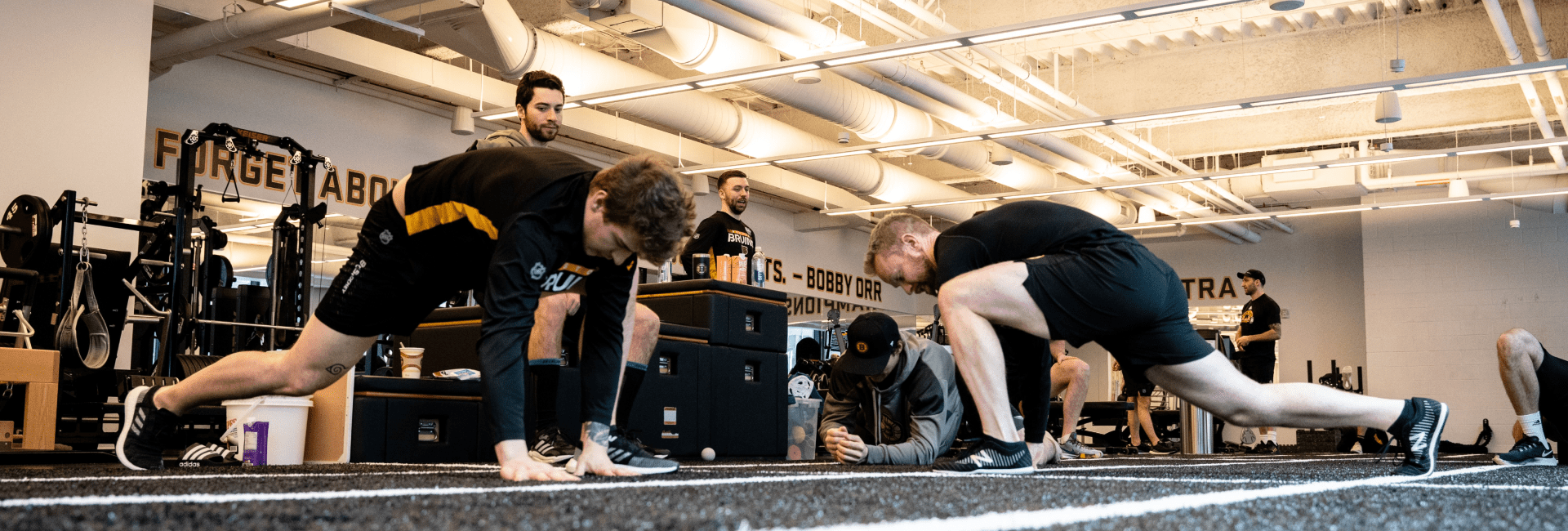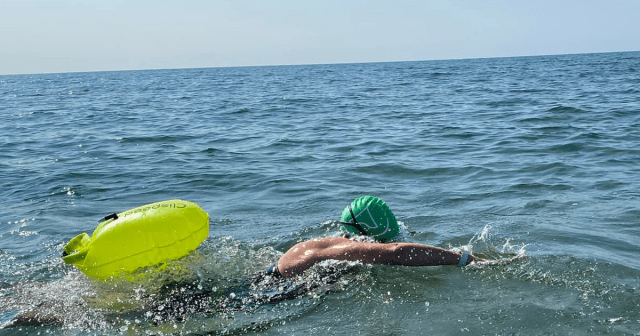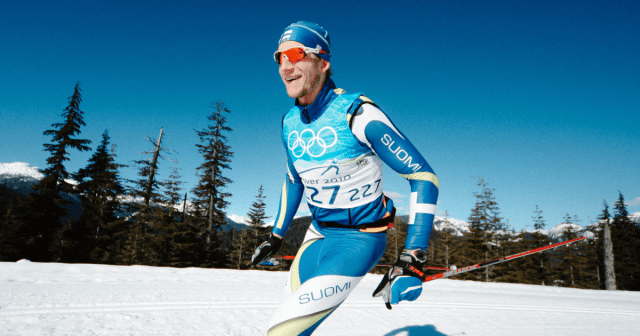Even the strongest, most admired elite athletes need rest. From time to time, our bodies, including those with muscles made of iron, need a movie night on the couch and a good 10-hour sleep. For most of us, it isn’t too hard to take a day off from training, but how can top athletes who compete in ultra-demanding professional leagues, like the NHL, find the time to rest and recover enough to be game-ready? During a typical week, players in the world’s best leagues travel, practice, hit the gym, and play several games. Week after week, month after month, the same unforgiving schedule repeats, all while enduring the pressure and stress of professional sports.
Such extraordinary demands take their toll and often manifest in injuries and poor performances. An exhausted body can’t compete at the top level, so it isn’t surprising that performance and conditioning coaches are increasingly turning their attention to recovery and rest. As wearable devices allow monitoring the human body while at rest and not doing sports, coaches have a larger toolkit to follow recovery and optimize training time accordingly.
To have a better understanding of how elite athletes train and recover, we had a chat with Kevin Neeld, the Head Performance Coach of one of the top ice hockey teams on the planet, the Boston Bruins. When coaching pro-levels athletes, Kevin has always faced the challenge of fitting in enough recovery time, including sleep, in his athletes’ busy schedules. “Throughout the season, there are significant disturbances to traditional circadian rhythms built into the schedule based on travel and game times, but layered into those circumstances are all the factors that also affect non-professional athletes (sleep patterns of significant others, children, and pets, environmental noise, etc.),” he explains. “We do our best to educate players on optimal sleep habits and to provide resources to help them maximize their sleep opportunities, but it’s a challenge for sure.”
Few performance coaches know ice-hockey and what it takes to elevate a player’s condition, than Kevin Neeld. Kevin oversees the performance training program of the Boston Bruins, one of the best NHL teams this season. In our chat, he offers a glimpse into the team’s training methods and how to balance recovering and training to always be game-ready in one of the most competitive professional leagues.”
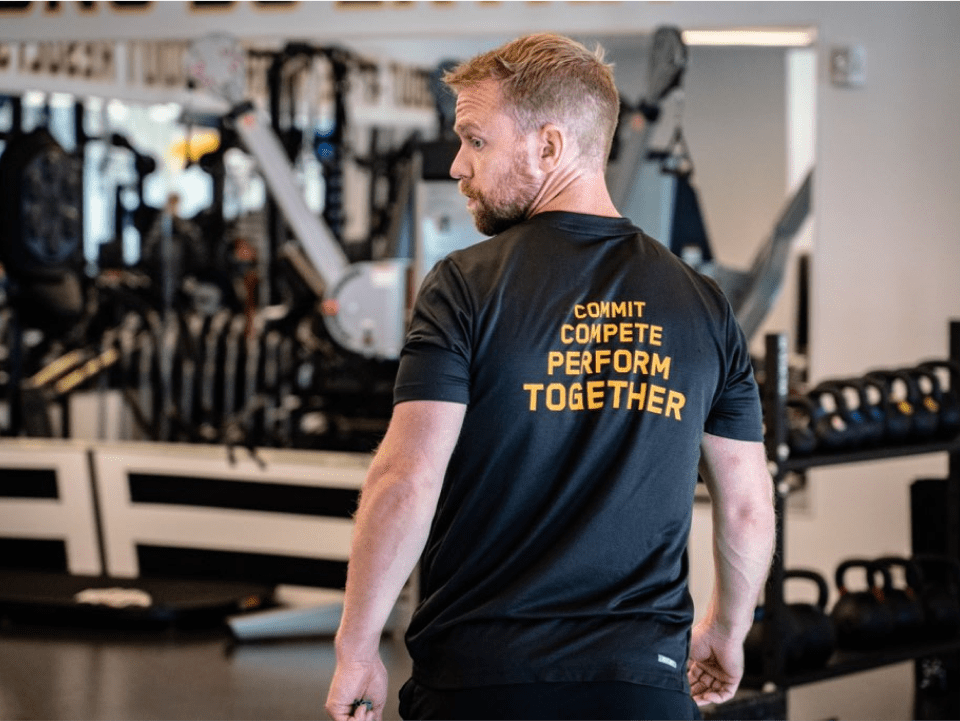
With a long-season, there are obviously ups and downs with performance as players suffer from fatigue, how do you make sure players get enough recovery? How is the workload managed optimally when there are three or four games a week? Is it in the end just a matter of “playing the game itself is the best practice” as the saying goes?
The reality of the NHL game schedule is that players never have a long enough window to fully recover. Two of our major goals as a staff are to:
Prioritizing execution requires a constant balance of practice/preparation and managing energy. Not enough practice means compromised execution. Too much practice leads to excessive fatigue, which also means compromised execution.
- Limit unnecessary stress – take a “least effective dose” perspective on “off-ice” training and prioritize quality in all on-ice work.
- Maximize recovery opportunities through supporting the players’ nutrition and sleep and recommending specific modalities to minimize feelings of soreness and “heavy legs”.
We establish standard in-season workloads through the first few weeks of the season and then work collectively to keep players from drifting too high or too low. As the game schedule becomes more condensed (i.e. more games in less time), the workload from practices comes down. Depending on the exact schedule, this could mean more days off the ice, or adjustments to the volume or intensity of practices.
Prioritizing execution requires a constant balance of practice/preparation and managing energy. Not enough practice means compromised execution. Too much practice leads to excessive fatigue, which also means compromised execution.
The NHL regular season consists of 82 games plus a minimum of 16 playoff games if your team is destined to win the adored Stanley Cup. Besides the fatigue coming from the busy game schedule, these games are played across the North American continent with teams traveling thousands of miles across different time zones.
Tell us a bit about the team’s routines, how do you approach the training sessions and main drills and exercises?
In a typical week, the team will play three or four games, practice once or two times, and train off-ice twice. Because the game schedule varies from week to week, we adjust the timing of our training to maximize both the benefit of our training and the subsequent recovery window.
Players will go through a prep process (typically mobility, hip/core work, and dynamic warm-up) before every skate. This serves both the short-term benefit of having players warm and ready to start fast on the ice and the long-term benefit of improving durability by maintaining range of motion and core strength/control throughout the season.
Our individual training days have an overarching theme (i.e. speed, power or strength), but the players are divided into groups based on their specific needs and exercises are selected with consideration to both movement restrictions and injury histories.
In general, we use a “least effective dose” mentality in designing our programs. The overwhelming majority of their training volume comes from on-ice work, so the goal of our program is to keep the ceiling of their intensity high across different movement speeds.
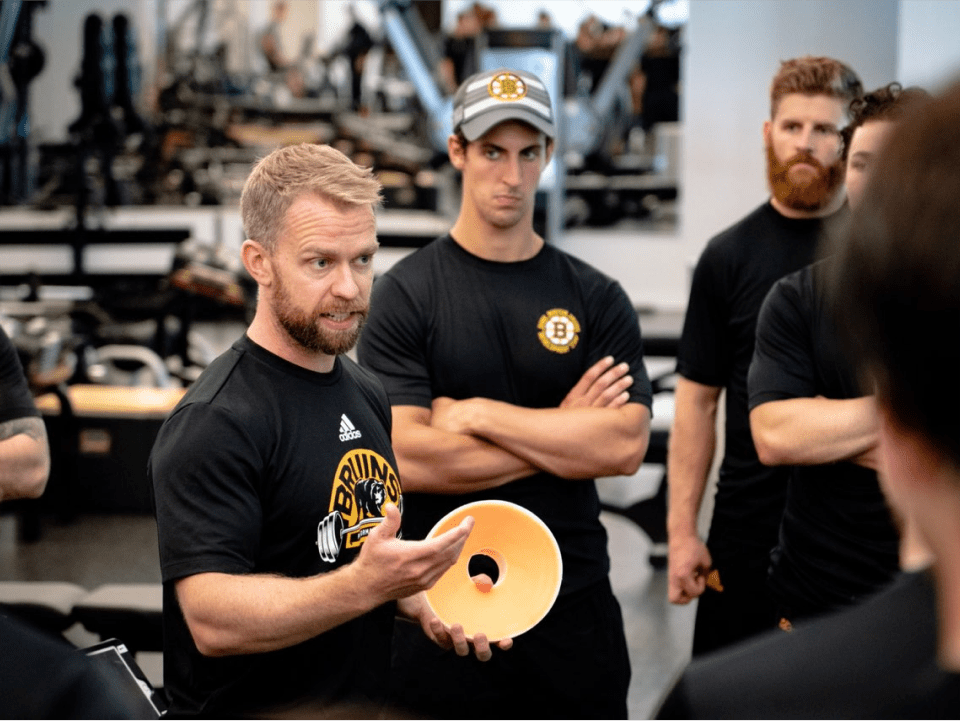
How does the training schedule differ between the regular season and the fierce playoff time? Is there more time planned for recovery during the playoffs?
The intensity of playoff games physically and psychologically/emotionally increases significantly from a typical regular season game. That said, the approach we take from a preparation standpoint really depends on how the schedule unfolds.
As a general rule, the focus is on maximizing energy for the games, so practice volume decreases. However, if there are extended breaks between the end of the regular season and start of playoffs or between playoff series, game intensity and pace need to be manufactured through practice and controlled scrimmages.
How do you monitor heart rate and fatigue during the games, is there room for this sort of data in a game situation or is the statistical information such as goals scored, blocked shots, Corsi numbers etc. more important?
There are league restrictions on monitoring heart rate during games at this level, so we don’t have access to that data. We rely heavily on subjective player feedback along with our other sources of longitudinal monitoring data to help gain insight into how the players felt, and which factors may have contributed to that (positive or negative).
There are league restrictions on monitoring heart rate during games at this level, so we don’t have access to that data. We rely heavily on subjective player feedback along with our other sources of longitudinal monitoring data to help gain insight into how the players felt, and which factors may have contributed to that (positive or negative).
Throughout an 82-game schedule, there will be games where players feel great, but don’t contribute on the scoresheet and others where players don’t feel like they have their typical energy but have great games statistically. We try to focus on trends more than isolated games.
Skating is arguably the most important skill in ice hockey as it is required by every position from forwards to defensemen, and goaltenders alike. Without strong fundamental skating skills, it is hard for players to perform to their full ability. Moreover, over the years as the game has developed, there has been increasing importance on skating, especially in speed. For coaches, a simple jump test can provide unique insights into skating performance.
You’ve mentioned before how a jump test is a good signal of skating speed, can you elaborate more on that? How do you analyze and interpret the results?
Several studies have established a moderate correlation between vertical jump height and skating speed. The relationship is stronger with lower competition levels, but this is generally consistent with internal analyses I’ve performed with both male and female players across different levels. Skating requires a high degree of skill, and there are several other factors (mobility, stability/body control, technique, etc.) that impact skating position and efficiency, and both physical and tactical factors (e.g. pattern recognition and anticipation) that impact playing speed, but the general idea is that vertical jump height is a measure of lower body power, and increasing lower body power will increase the potential to skate faster.
We integrate vertical jump monitoring into our training program throughout the season and use the feedback (primarily how individual players change relative to their historical values) to make adjustments to our program moving forward on both an individual and team basis.
Technological advancements have been part of professional sports for decades, and as science, research, and development keep on improving, there will be even more tools available for teams to use in order to improve their performance.
Sports technology and science are evolving at a very rapid pace, if you had a crystal ball, where would you see us be in the next five years?
There are more opportunities to collect data than ever before. While I generally think having feedback across different workload and performance parameters is value, increased data collection and interpretation comes at a cost – namely an increased burden on the athlete and a substantial increase in workload for the performance staff, in terms of both evaluating emerging technology and integrating impactful technology into their workflow (collection, analysis, interpretation, reporting, actioning). That said, I think the future will be characterized by three trends:
- More embedded data collection: Collecting data from the player within their normal sport participation and/or daily living without asking them to perform separate “tests”.
- Larger staffs: Performance staffs will expand to include professionals that can assist with the set-up, collection, analysis, and integration of data.
- Increased importance of communication: Two things will drive this trend. First, the primary goal of collecting data should be to make some change that positively impacts player or team performance. To get from the “collection” to “action” requires communicating the “why” to the stakeholder (i.e. coaches, athletes, etc.). Second, there is a lot more to coaching than interpreting numbers. You learn A LOT from players, including valuable “performance indicators” that you don’t have numbers on AND explanations for why a players’ numbers may be trending in a particular direction, by talking to them. The pendulum will swing back toward a better balance between objective data and communication/relationship building.
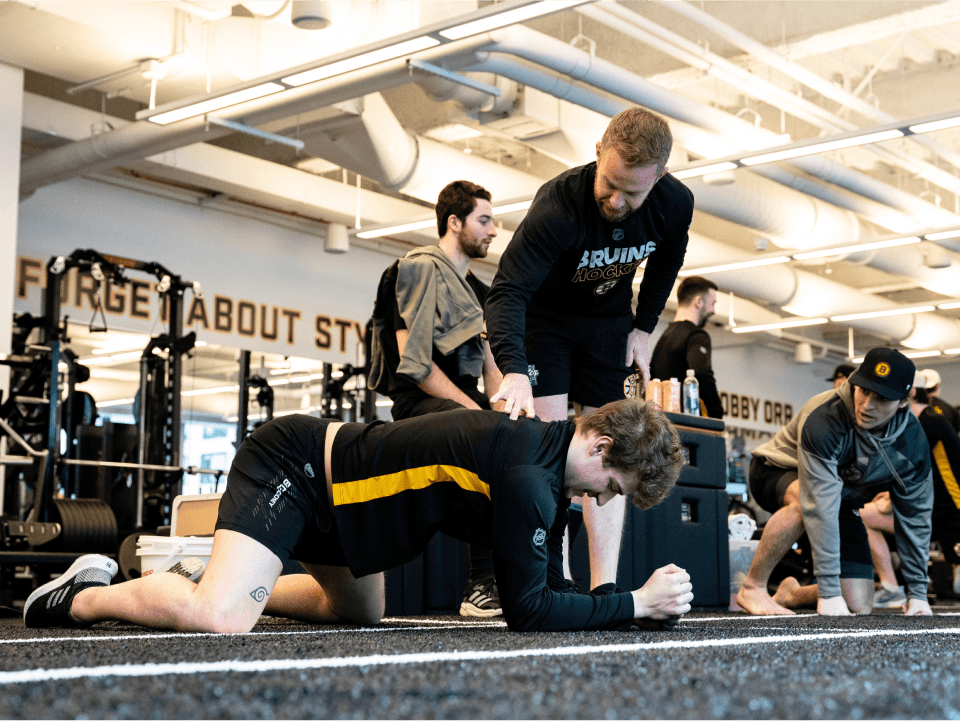
Technology is a one-way to interpret player performance, but how much do you think player performance can be improved by interpersonal skills? Do you think an easygoing chat with the player can sometimes do the trick?
I alluded to this above, but I think people tend to over-value what they can measure and under-value what they can’t (or don’t). Human beings are incredibly complex, both in the integration of their biological systems, and in how psychology layers through the various aspects of the preparation and performance process. Bottom line – we don’t have, and shouldn’t aspire to have, objective data on EVERY system that contributes to a player’s effort, energy, and execution. Teams are dynamic social environments, and establishing a genuine relationship built on trust and mutual respect can lead to conversations that have a larger impact on performance than anything else.
From a sleep and recovery standpoint, I’d recommend focusing on habits and how you feel in response to those habits. Data should be viewed from more of a long-term perspective.
What would be your advice to those non-elite athletes who are tracking their heart rate data and sleep, and are paying attention to recovery? There’s so much data one can collect by using wearables, but which are the key metrics to follow and that can guide people who are seeking a more active life and better sports performance?
From a sleep and recovery standpoint, I’d recommend focusing on habits and how you feel in response to those habits. Data should be viewed from more of a long-term perspective. In other words, not “I took a warm shower tonight, and my sleep didn’t change”, but “I implemented X strategy every night for the last two weeks and I noticed X response.” Many sleep trackers suffer from significant accuracy issues and the “proprietary” scores provided to the user are based on faulty data, which can make the interpretation confusing for the user. Sleep is the most powerful recovery tool we have, so focusing some attention to improve sleep duration and quality is worth the effort. There are many easily accessible recommendations that people should start with (e.g. cool, dark, quiet room, warm shower/sauna/hot tub before bed, magnesium supplementation, minimize bright light exposure, etc.), and then use feedback on how they feel in conjunction with changes in their data to guide future decisions on how to improve.
In terms of tracking heart rate, I think users should have a clear goal for what their hoping to get out of the data. Live heart rate monitoring can be used to help guide exercise intensity, pace, and interval-recovery time, particularly with training designed to improve conditioning, and session heart rate loads can also be used as a decent global measure of total internal training stress (e.g. tracking workload over time). However, hitting a specific heart rate can occur for very different reasons and have different implications regarding the training stimulus depending on the activity. For example, high heart rates can be achieved through low volume, high intensity resistance training because of a substantial change in sympathetic drive, but this would cause a very different physiological response then achieving these elevated heart rates from moderate intensity running, for example. It’s important to have both an understanding of your training target, and how heart rate can provide feedback on whether you’re on the right track to achieving that target.
If you want to watch, and even try yourself, some of Kevin Neeld’s training drills, check his YouTube channel where you’ll find a series of home exercises tips for core, hip mobility, skating improvements, and more. You can also follow him on Instagram at @kevinneeld.
If you liked this post, don’t forget to share so that others can find it, too.
Or give it a thumbs up!
I like this article
Please note that the information provided in the Polar Blog articles cannot replace individual advice from health professionals. Please consult your physician before starting a new fitness program.
